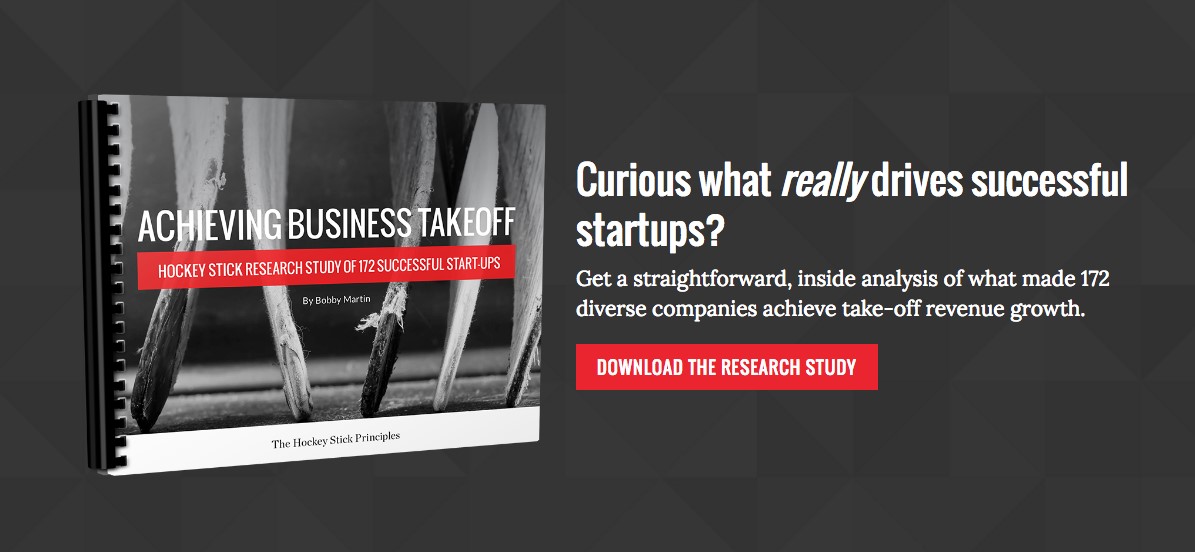In 2012, tucked away at a cozy table in Global Village Coffee House writing The Hockey Stick Principles, I was plotting the revenue growth curves for a few successful startups. I wondered what factors influenced their revenue growth. So, I searched for studies, and to my dismay, I had little luck. I was looking for answers to questions such as:
- How quickly does revenue typically grow for different types of startups?
- How long does it take for a startup’s revenue to take off and grow faster?
- Does the age of the founder make a difference relative to revenue growth?
- Do startups with multiple founders grow to become larger than those with only one founder?
- Which industries grow revenue the fastest?
Because I couldn’t find what I was looking for, I decided to embark on my own research study.
The three-year journey creating the study was tedious, but well-worth it. I subscribed to several databases to dig up details about successful startups. I begged founders to confidentially release to me their revenues and funding. I hired two smart interns, Kevin Bell and Drake Branson (a.k.a., my “bird dogs”), to help research public data online such as the ages of the founders, industries, products, and much more. I hired two Ph.D. candidates in statistics, Brian Gains and Beth Ann Tidemann-Miller (a.k.a., the “brains” of the organization), to ensure the research methods and results were calculated accurately.
Common themes
Turns out, across the 172 startups we researched, median startup revenue was $0 year one, and average revenue growth rose to nearly $3 million per year by year four. A couple of other interesting insights we learned:
- The age of the founder/co-founders doesn’t make a big difference. The average age for founders in the study was 32. Those with age experience got off to faster starts. After three years, those with age experience grew to an average $2 million versus $1.1 million for the younger crowd. But by the seventh year, those without experience had caught up as both sets recorded $34 million in revenue.
- Having a co-founder doesn’t help all that much. According to the study, having more than one founder helped startup revenue growth occur faster during the first four or five years, but by year seven, having the extra founder(s) made little difference.
I’m giving away my research findings!
These are just a few of the insights we uncovered in our research, and today, I’m excited to finally share with you more in-depth analysis in my free 20-page summary, “Achieving Business Takeoff.”
I considered pitching the results to business publications but decided against it, realizing they’d likely request an exclusive use of the data.
Instead, I decided to share it with anyone who’s interested in hopes that it will prove insightful, as it did for me and my team. So, click the image below (or here if you can’t see the image) to download the summary for yourself. If you like it, feel free share it with your friends.
Sign up to get more great insights directly to your inbox.
As a special bonus, you'll also immediately get access to my inside analysis of what made 172 diverse companies achieve take-off revenue growth.


